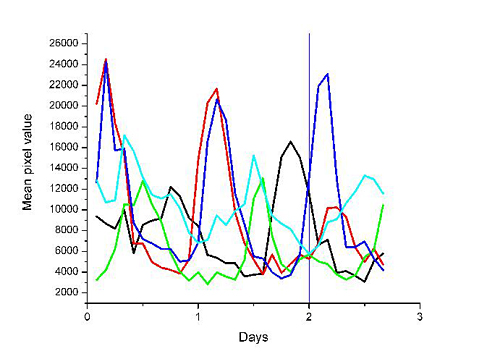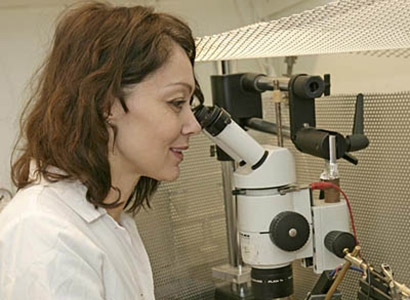Is it possible to watch the biological molecular clock ticking?
Yes, in fact it is! By tagging a so-called glock gene or a clock gene protein to a visible marker, one can watch the gene or protein activity in real time.
Video about Slice Preparation, Organotypic Tissue Culturing and Luciferase Recording of Clock Gene Activity in the Suprachiasmatic Nucleus. Language: english.
The procedure of preparing slices containing the adult mouse hypothalamic suprachiasmatic nucleus (SCN), and a rapid way to culture the SCN tissue in organotypic culture condition, are reported. Further, the measurement of oscillatory clock gene protein expression using dynamic luciferase reporter technology is described.
Single cell rhythms:
Each SCN neuron has its own "clock" rhythm. The cell rhythms in dispersed culture oscillate in different phases: they are not synchronized via a synaptic network.
PER2::LUC (Yoo et al, PNAS 2004) protein oscillations in individual SCN neurons (Video by S. Michel)

Tissue rhythms:
When single cell rhythms are syncronized within a tissue, the produce a rhythmic output.
Per1-driven luciferase activity in rat SCN explant cultures from transgenic animals (Yamazaki et al 2000).





